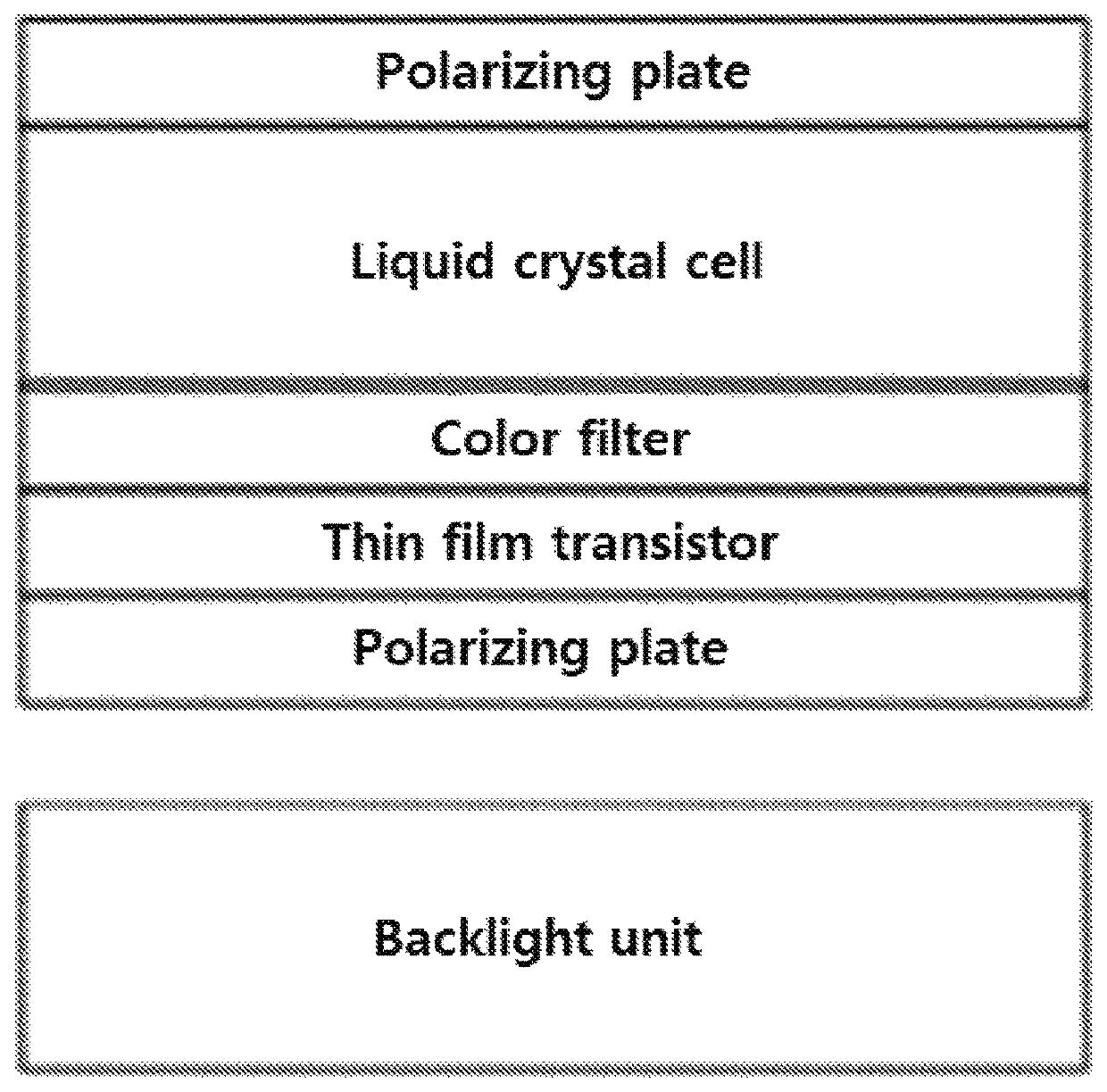Antireflection film and display device having hard coating layer with specified surface roughness and internal haze
a display device and anti-reflection film technology, applied in the direction of coatings, optical elements, instruments, etc., can solve the problems of easy visible defects inside the display, poor surface sharpness of anti-glare coatings, and insufficient anti-glare effects, etc., to reduce the phenomenon of sparkling, excellent visibility, and excellent workability
- Summary
- Abstract
- Description
- Claims
- Application Information
AI Technical Summary
Benefits of technology
Problems solved by technology
Method used
Image
Examples
preparation examples 1 to 5
Solutions
[0151]Anti-glare hard coating compositions were prepared by mixing the components in Table 1 below.
[0152][Component Information][0153]BEAMSET 371: Manufactured by Arakawa, epoxy acrylate polymer, molecular weight of 40,000[0154]UA-306I: Urethane-based acrylic oligomer (manufactured by Kyoeisha)[0155]8BR-500: Photocurable urethane acrylate polymer (MW 250,000, manufactured by Dae Sung Chemical Co., Ltd.)[0156]TMPTA: Trimethylolpropane triacrylate[0157]PETA: Pentaerythritol triacrylate (Polyfunctional monomer, molecular weight of 298)[0158]Irgacure 184: Photoinitiator (manufactured by Ciba)[0159]IPA: Isopropyl alcohol[0160]EtOH: Ethanol[0161]103BQ: Spherical acrylic-styrene copolymer resin particles (average particle diameter of about 2 μm, refractive index of about 1.515, XX-103BQ, manufactured by Sekisui Plastic)[0162]113BQ: Spherical acrylic-styrene copolymer resin particles (average particle diameter of about 2 μm, refractive index of about 1.555, XX-113BQ, manufactured b...
preparation examples 6 and 7
tions for Preparing Low Refractive Index Layer
preparation example 6
Composition for Preparing Low Refractive Index Layer 1 (LR1)
[0169]0.37 g of a polyfunctional monomer (DPHA, molecular weight of 536), 0.13 g of a fluorine-based additive (RS907, DIC Corporation), 15 g of methyl isobutyl ketone as a solvent and 16 g of propylene glycol monomethyl ether were added and stirred. Then, 0.03 g of polysilsesquioxane (MA0701, Hybrid Plastics Inc.) was added while stirring, and 2.5 g of hollow silica (Thrulya 4320, manufactured by Japan Catalysts and Chemicals) was added at last, and the mixture was sufficiently stirred to prepare a low refractive index coating solution.
PUM
| Property | Measurement | Unit |
|---|---|---|
| roughness | aaaaa | aaaaa |
| angle | aaaaa | aaaaa |
| angle | aaaaa | aaaaa |
Abstract
Description
Claims
Application Information
 Login to View More
Login to View More - R&D
- Intellectual Property
- Life Sciences
- Materials
- Tech Scout
- Unparalleled Data Quality
- Higher Quality Content
- 60% Fewer Hallucinations
Browse by: Latest US Patents, China's latest patents, Technical Efficacy Thesaurus, Application Domain, Technology Topic, Popular Technical Reports.
© 2025 PatSnap. All rights reserved.Legal|Privacy policy|Modern Slavery Act Transparency Statement|Sitemap|About US| Contact US: help@patsnap.com



